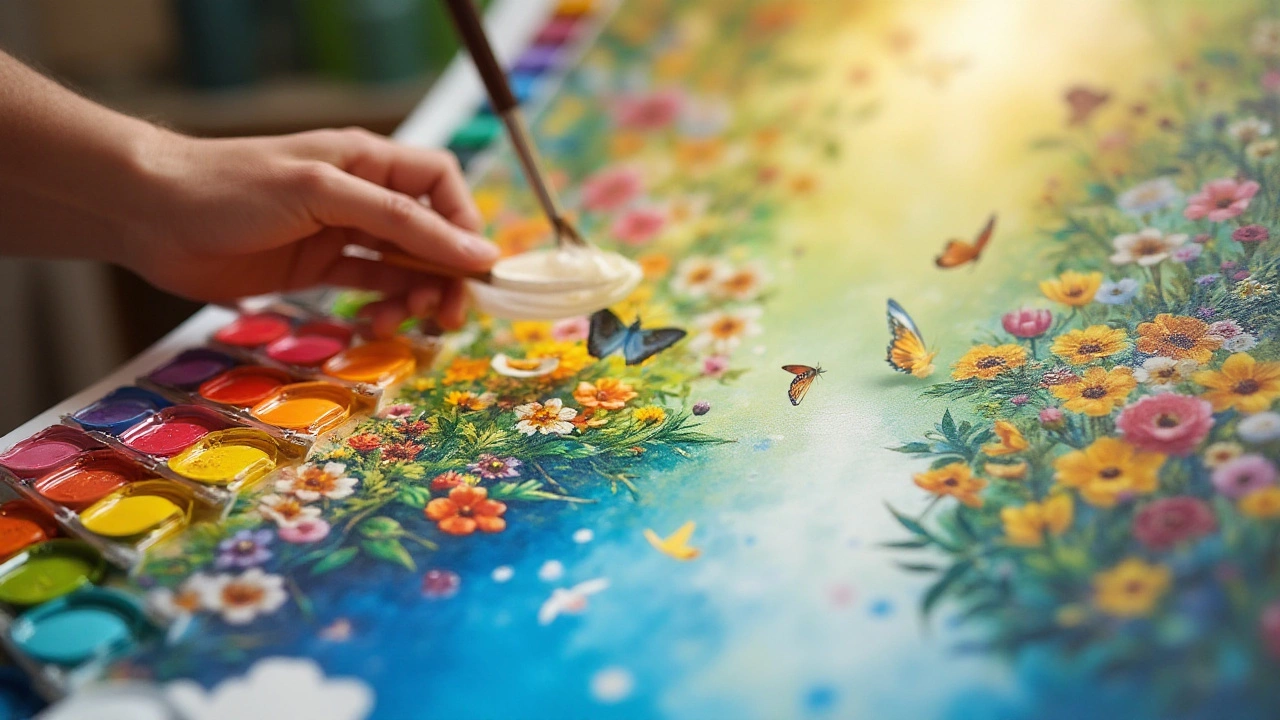Watercolor Palette: Tips, Tricks, and Inspiration
If you love watercolor, the right palette can make a big difference. It’s not just about having a bunch of tubes – it’s about picking colors that work together and using them in a way that feels natural. Below you’ll find simple advice on choosing colors, setting up your workspace, and getting the most out of each brushstroke.
Choosing the Right Colors
Start with a handful of basic hues: a warm yellow, a cool blue, a bright red, and a neutral brown or gray. These four can be mixed to create most of the shades you’ll need. Add a couple of greens or oranges if you want more variety, but avoid over‑loading your palette – too many colors can slow you down.
When you’re not sure which pigments to buy, look at the posts "What to Paint First in Watercolor" and "Do You Sketch Before Watercolor?". Both explain why starting with light washes and a limited range helps you see the colors develop. Light washes let you test how pigments behave on paper before you go deeper.
Try mixing a small amount of water with each color to see its true value. Some pigments look bright dry but turn muddy when you add water. A quick test on a scrap piece of paper will save you from a frustrating mistake later.
How to Use Your Palette Effectively
Keep your palette clean. Rinse your brush with clean water between colors – this prevents unwanted streaks. If you’re mixing a new shade, use a separate spot on the palette so you can see the exact mix without contaminating other colors.
One trick from the "Watercolor Painting Tips" post is to layer from light to dark. Start with a wash of the lightest color, let it dry, then add deeper tones on top. This builds depth without making the paper soggy.
Sketching first can also help. The "Do You Sketch Before Watercolor?" guide says a light pencil outline lets you place colors more confidently. If you work without a sketch, you might waste pigment by painting in the wrong area.
Remember that the paper you use affects the palette too. Rough paper holds more water, so colors stay softer. Smooth paper dries faster and gives sharper lines. Choose the paper that matches the style you’re aiming for.
Finally, don’t be afraid to experiment. Try a new pigment each week and note how it mixes with the basics. Over time you’ll build a personal palette that feels intuitive.
Whether you’re just starting out or looking to sharpen your technique, these simple steps will help you get the most out of your watercolor palette. Keep practicing, stay curious, and watch your paintings come alive.

13 Nov 2024
The world of watercolor begins with the right colors, tailored to bring your artistic vision to life. Exploring the foundational hues can open the door to a captivating array of artworks, whether you’re capturing the vibrant energy of a sunny day or the subtle tones of a quiet evening. Understanding which colors to include in your beginner palette can set you up for success, offering a balance between creativity and control. This article delves into the must-have colors for every novice watercolor artist and tips to effectively use them.
Continue reading...
